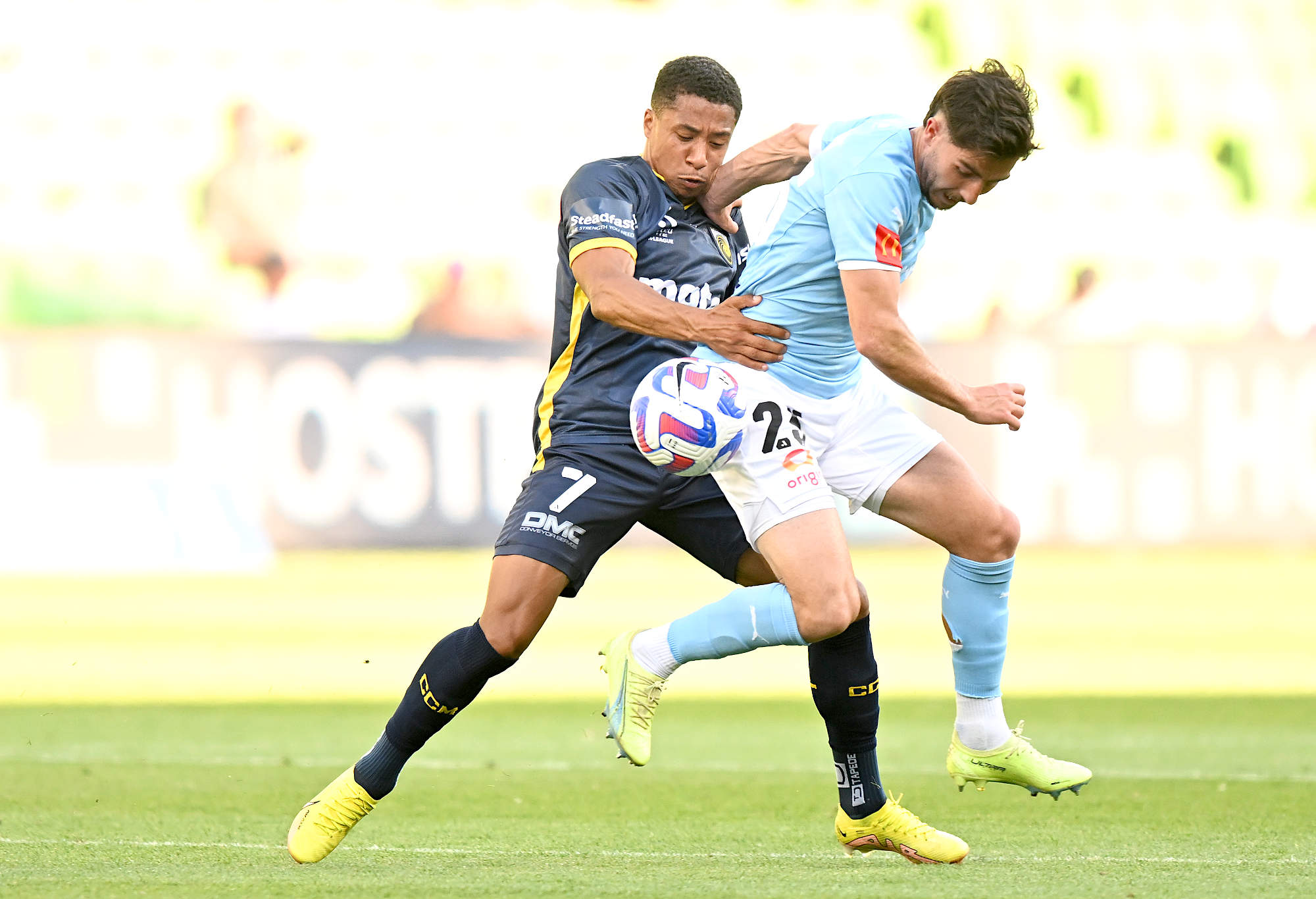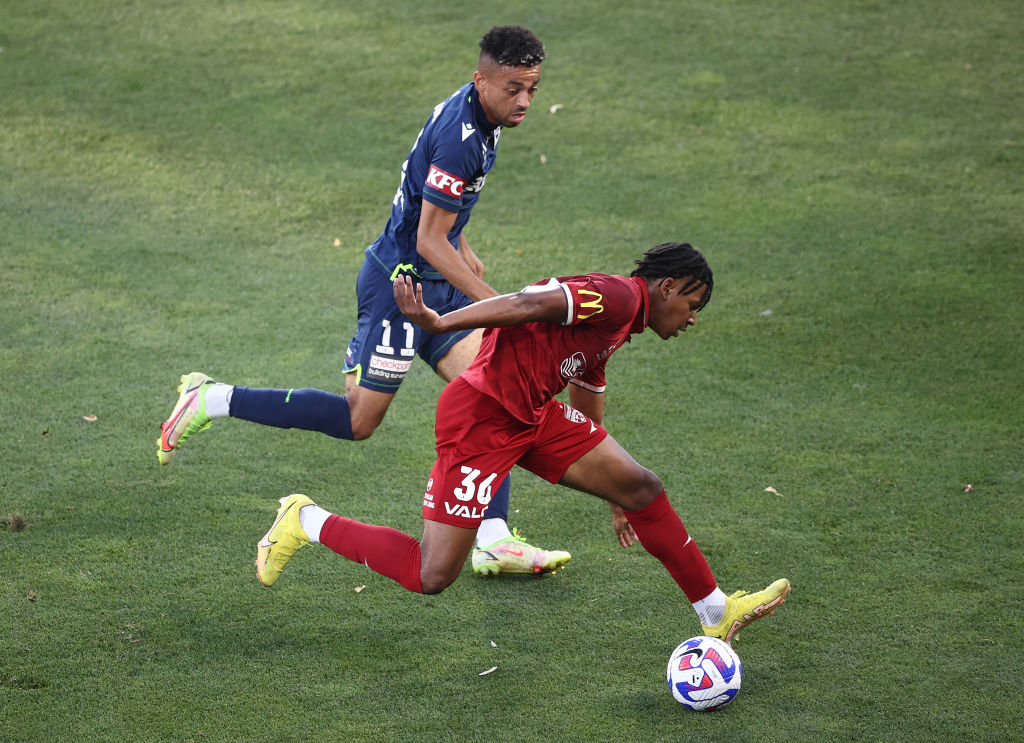With Australia having just 26 million people, including just 14 cities with a population of 250,000 or more, it does very well by world standards in terms of sporting crowds.
In 2023 the AFL achieved an average of 36,000 (18 teams) excluding finals, only lower than America’s National Football League (69,400 for 32 teams), Germany’s Bundesliga (43,000 for 18 teams) and England’s Premier league (40,200 for 20 teams).
The NRL, with a record crowd average in 2023 of 19,600 (17 teams), also compares well with major football leagues based on 2022-23 data: Spain 29,400 (20 teams), Italy 29,500 (20), France 23,700 (20), Brazil 21,500 (20), and the USA 21,000 (29).
This level of support is despite greater concern about the adverse effects of concussion, which may reduce playing numbers over time for both the AFL and NRL when compared to say football and basketball.

(Photo by Morgan Hancock/Getty Images)
In contrast, while Australian public interest in national football teams has been evident during the 2022 and 2023 men’s and women’s World Cups, including a record television audience for the Matildas, the A-League’s 2022-23 home crowd average was just 7,500 (12 teams) after a high of 14,600 in 2006-07 (8 teams).
So what are some of the reasons why the A-League may long struggle to match interest in the AFL and NRL?
First, one cannot ignore history. The cultural affinity of different Australian cities (namely Melbourne and Sydney) to Australian Rules and Rugby League over many decades is a prime reason why their dominant state leagues evolved into the most watched national club competitions of the AFL and NRL.
As of 2023 Melbourne and Sydney, with around 5 million people each, had 5 AFL teams with an average home crowd above 40,000: Collingwood 63,700, Carlton 51,400, Richmond 50,600, Essendon 45,600 and Melbourne 44,600.
Of the other 4 Melbourne AFL teams, Hawthorn averaged 33,300, St Kilda 33,000, Western Bulldogs 28,500 and North Melbourne 20,800.
Of Sydney’s 9 NRL teams, Canterbury averaged 18,300, Cronulla 14,100, Manly 16,300, Parramatta 18,300, Penrith 18,900, Souths 19,700, St George Illawarra 11,900, Sydney Roosters 22,900 and Wests Tigers 15,600.
Second, as both the AFL and NRL now include teams in cities with previously little interest in the very different football codes, it appears many Australians prefer the more violent, fast-paced and relatively high scoring nature of both games, although the third football code, Rugby Union while also played played in the cooler months has withered away in terms of attendances and television audiences.

Adelaide’s Panashe Madanha. (Photo by Robert Cianflone/Getty Images)
In Sydney and Brisbane where rugby league is most popular, the AFL Swans and Lions averaged 32,800 and 27,400 in 2023 for home games.
In Melbourne, where rugby league player numbers are virtually negligible when compared to Australian Rules and football, its NRL team (Storm) averaged 20,900.
In comparison, the A-League had only three teams nationwide with a home crowd average above 10,000 in 2022-23 with only Sydney FC above 15,000 (17,000).
Of course, it would not take much for the A-League to once again get above 10,000 again if football fans actually turn up to A-League matches where there are suitable venues.
After all – Brisbane and Perth, with poor 2022-23 home crowds of 5,600 and 4,600, once averaged 16,900 in 2007-08 and 13,000 in 2000-2001.
As constantly stated, effective strategies to boost crowd numbers could include letting young kids in for free, although the A-League is mindful it has to pay for stadium use and wages, and playing matches in the evening to avoid the heat of the day.
But the idea that Melbourne and Sydney, hosting nearly 40 per cent of Australia’s population, can boost the A-League crowd average is proving a disaster and fortunately the next A-League club will be Canberra.

(Photo by Jason McCawley/Getty Images)
Not only is Melbourne Victory’s recent 10,000 average a fraction of the 25,400 achieved in 2014-15 (with a number of big games played at Docklands), with Melbourne City’s 5,600 average in 2022-23 also well below its near 10,000 average in 2017-18, but the third team of Western United attracted a dismal 3,100 for home matches in 2022-23.
Even in Sydney, the 2022-23 crowd average of 10,700 for the Western Wanderers is far behind 17,700 achieved in 2016-17, despite playing at one of Australia’s best rectangle stadiums at Parramatta, while Central Coast Mariners managed just 6,600 and Macarthur FC attracted just 3,500 in 2022-23.
The A-League faces added disadvantages against the AFL and NRL because the latter two face little international competition as the only major national leagues of their sporting codes (besides England’s less lucrative Super League).
The A-League also seeks to attract paying fans who may also have purchased television access to the best national football leagues in the world.
Optus Sport alone reported having 1 million subscribers by November 2021 with the popularity of the English Premier League attracting 280,000 account holders to watch Everton draw with Liverpool during September 2020.
While much is made of the golden years of the A-League around 2006 through the arrival of genuine stars like Alessandro Del Piero and Emile Heskey, even Australian players are attracted to higher paying overseas leagues which makes it hard to attract marque players.

Adelaide United star Craig Goodwin returned to Al-Wehda in the Saudi Professional League in the offseason. (Photo by Sarah Reed/Getty Images)
The A-League’s average wage is around $150,000 and there are 23 national football leagues paying at least double that amount including Greece, Denmark and Austria despite smaller average crowds than the A-League.
While few Australians now play in the big five European football leagues where average salaries are at least 15 times higher than the A-league, Australian (and foreign) players are still very much attracted to England’s second tier Championship, with its average wage 7 times higher than the A-League.
Hence, while it has been noted most national leagues are basically feeder competitions for the biggest leagues, and that A-League clubs “have reaped more than $7 million in transfer fees this pre-season” which helps address their shrinking budgets, the loss of top players (such as Craig Goodwin to Saudi Arabia) may complicate the decision of some football fans to attend the lesser A-League.
While English fans now accept watching the best players in the world rather than the past reliance upon home-grown talent, the A-League increasingly has to develop young players to help pay for a few promising or ageing overseas players as marque players.
Let’s hope the A-League can quickly return to an above 10,000 crowd average. Despite football being the World Game, it remains to be seen how long it takes to again return to the near 15,000 figure achieved around 15 seasons ago.
































































































